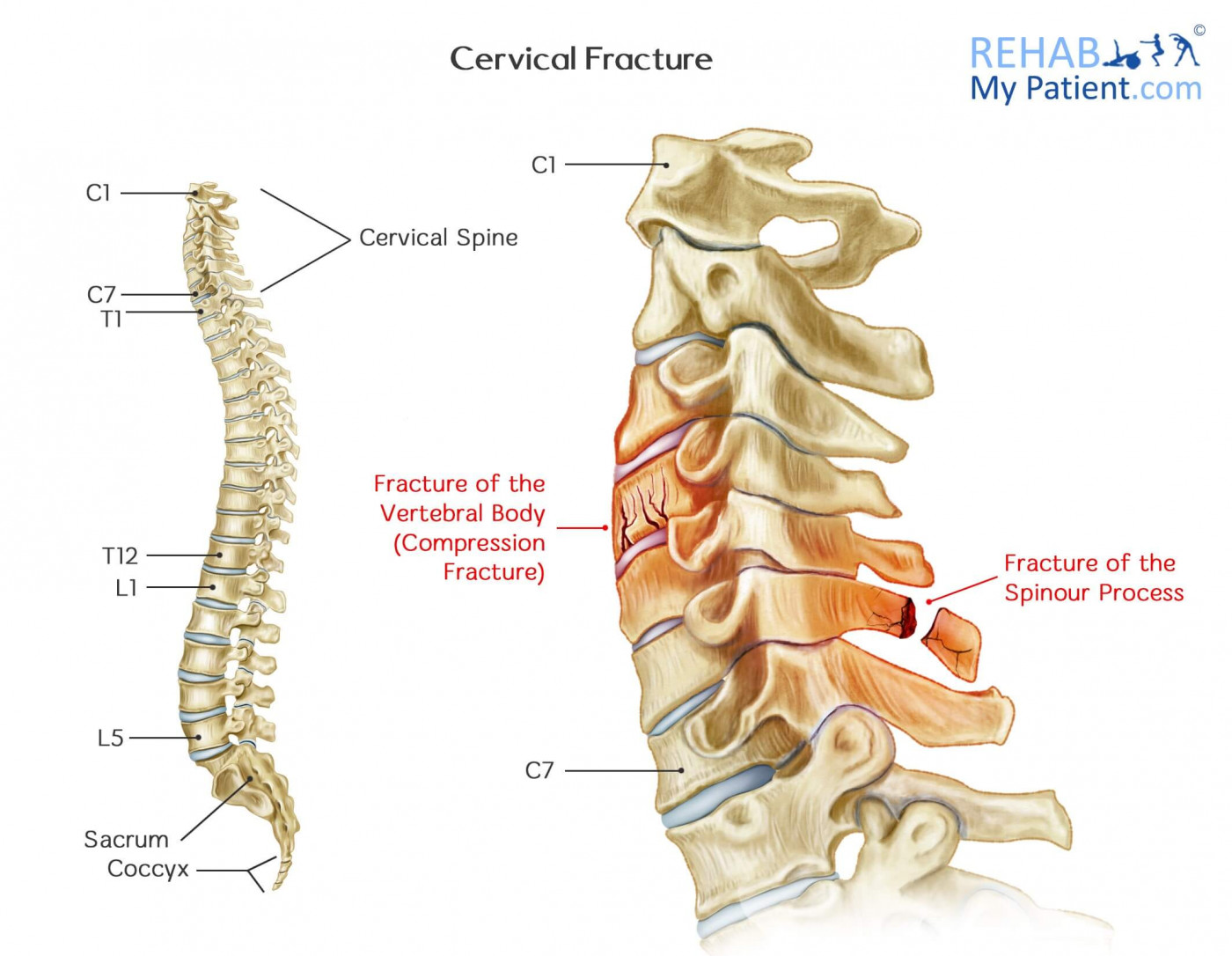Cervical Fracture
Posted on 14th Aug 2017 / Published in: Neck

Seven bones in the neck make up the cervical vertebrae. They provide the head with support and keep it connected to the body and the shoulders. A fracture in one of the cervical vertebrae is often referred to as a broken neck. Most of the time, a cervical fracture is the result of a high-energy trauma, such as that of a fall or an automobile crash. Athletes are at risk for these types of fractures. For athletes, a cervical fracture can occur when:
- An ice hockey player is hit from behind and ends up ramming into the boards
- A gymnast that ends up missing the high bar performing a release move and ends up falling
- A football player that spears an opponent with their head
- A diver that hits into the bottom of a shallow pool
Cervical Fracture Anatomy
Inside of the spinal column, there is a tube for the spinal cord. This thick bundle of nerves starts at the base of the brain. It relays information between the brain and the body. Nestled between the vertebrae are the discs. Each individual disc is attached to the bottom of the vertebra that lies above it and the top of the one below it. Muscles and strong ligaments keep the column together. All of the structures work together to surround, protect and support the spinal cord.
Typically there are two parts of the neck that can fracture. One part is the vertebral body (the main part of the vertebra, located at the front of the neck) and the other part is the spinous process (the long projection that comes out the back of the vertebra). Neck fractures do not necessarily mean you will be left with paralysis. The fracture must be severe enough to break the vertebra and transect the spinal cord.

How to Treat a Cervical Fracture:
- Immobilization
If there is a possibility of a broken neck, it is imperative that complete mobilization of the neck ensues. For athletes, the shoulder pads and helmet should stay on while immobilizing the spine.
- Collar or Brace
Neck fractures that are not as serious can be treated with a collar or brace. Until the neck is healed all the way, the brace will need to remain in place. Most of the time, the healing process is eight to 12 weeks. Medications are available to help reduce swelling and pain.
- Surgery
Fractures that are more severe might need surgery to get the bones back in alignment. The neck might need to be in a traction before surgery. Metal plates with screws can help keep the bone in position.
- Exercises
Once it is determined that you are ready, strengthening and range-of-motion exercises should be started. When performing the exercises, use the assistance of a physical therapist. Discuss the various types of physical therapy you should partake in, as well as any precautions and lifting restrictions before beginning a program.
Tips:
- Make sure you wear the appropriate padding and safety equipment whenever you participate in sports and various activities.
- When it comes to football, make sure you use the proper tackling techniques. Never attempt to spear with your helmet.
- Prevent falls, stay active and agile by building strong muscles.
- Never dive into water that you don’t know what the depth is or what obstacles exist.
- Consume a diet that is rich in Vitamin D and calcium. Those at most risk are the elderly who have weak bones and suffer a fall or road traffic accident.
- Build strong bones by performing weight-bearing exercises.
The free online CSS cleaner allows you to organize style for websites.
Sign UP
Sign up for your free trial now!
Get started with Rehab My Patient today and revolutionize your exercise prescription process for effective rehabilitation.
Start Your 14-Day Free Trial